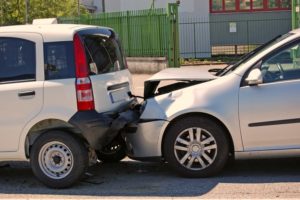
Rear-end collisions are some of the most common types of automobile accidents. They can cause serious injuries that require significant medical expenses. If you find yourself in this situation, you should act fast. Enlisting the help of an experienced car accident lawyer from Zervos & Calta, PLLC allows you to defend your rights and receive fair compensation.
Contents
Injuries That Are Associated with Rear-end Collision Accidents Include:
- Whiplash
- Spinal damage
- Broken bones
- Cervical and lumbar sprains
- Contusions
- Traumatic brain damages
- Concussions
In most cases, victims of rear-end accidents sustain soft-tissue injuries. Many people suffer from pain and stiffness associated with whiplash, which affects the shoulder and the neck. The pain results from the sudden and violent jolt that occurs due to the impact of the collision. Reports show that one in every five vehicle occupants involved in a rear-end crash experience symptoms of whiplash.
The majority of the victims suffer from pain and stiffness for more than seven days. Damages to the spine resulting from car accidents can trigger excruciating pain. The force of the collision causes the upper and lower areas of the back to compress. As a result, victims can sustain bulging or herniated lower back disks.
Key Considerations After a Rear-end Accident
The road to recovery can be long and costly. You may require physical therapy, psychological treatment, or surgery. Physical damage compromises working capacity, which disrupts the flow of income. As a result, you face emotional trauma, physical damage, and financial losses.
Initiating legal recourse with the assistance of our personal injury lawyer enables you to claim compensation from the negligent driver. Each year, the recklessness of negligent drivers results in more than 500,000 people sustaining minor or serious injuries. These figures only cover damages caused by rear-end collisions.
If you become a victim of a rear-end car or truck accident, you should familiarize yourself with the best actions to take immediately after the fact. Our accident attorneys near you can provide vital information about the necessary steps and the pitfalls you must avoid. Following our attorney’s advice increases your chances of lodging a successful compensation claim.
Compensation Claims
In most cases, the driver of the car that crashes into the vehicle in front is liable for reimbursing the victims for financial losses, physical damage, emotional trauma, and damage to property. Litigants living in a no-fault state can seek legal advice on how to claim from the negligent driver’s insurer. However, the claim may be limited to personal injury protection coverage.
In such cases, our attorneys can explore ways to pursue the negligent driver if the applicable damages exceed your no-fault limit. For this reason, always seek legal advice after car or truck accidents to get accurate information about the value of your claim. If you are a litigant living outside no-fault states, you need to lodge a liability claim against the negligent driver’s insurer.
Comparative Negligence
In many cases, the only task you and the lawyer should handle is to determine the value of the claim with the at-fault driver’s insurance company. However, in other cases, you may need to provide that the driver who rear-ended your vehicle is legally at-fault. The insurance firm may challenge the validity of the claim by stating that you are partly to blame for the collision.
The insurer may single out non-working braking lights as a reason to apportion blame for your role in the crash. The insurer will argue that its client could not see that your vehicle was slowing down or stationary due to the malfunctioning brake lights. As such, our lawyers will assess the validity of the insurance adjuster’s decision.
The majority of states apply the comparative negligence laws to deal with these cases. Doing so allows you to pursue the negligent driver even if you were partly to blame for the sequence of events. In these cases, the law stipulates that you are eligible for reduced compensation. The final amount awarded to you is proportional to your share of the blame. For this reason, always verify the decision with your lawyer because it may be possible to prove that you are not partly to blame for the crash.
Exceptions
When it comes to determining fault, the judge may not grant liability if the driver of the rear-ended vehicle was moving recklessly. The court will apportion blame on the driver in front because the erratic movements make it impossible to avoid the crash. In other cases, the rear-ended driver is deemed at-fault if they suddenly stopped (without signaling) in front of the vehicle approaching from the back.
On the other hand, the court may not grant liability if visibility was poor at the time of the crash. This decision is applicable if the driver approaching from the back moved at a safe speed. Some causes of poor visibility include rain, fog, snow, or other adverse weather conditions. Also, the driver who rear-ends the vehicle in front is not deemed liable if the accident occurred while they are driving at a safe speed, and a third vehicle crashes from behind. The collision pushes the second vehicle towards the first vehicle.
Experts recommend that you should not assume that all rear-end car or truck accidents translate to the liability of the driver approaching from behind. You should always verify the facts with our experienced accident attorney. Insurance adjusters can reject the claim even when you feel that your case is watertight. As such, Zervos & Calta, PLLC gives you the best chance to win fair compensation.


